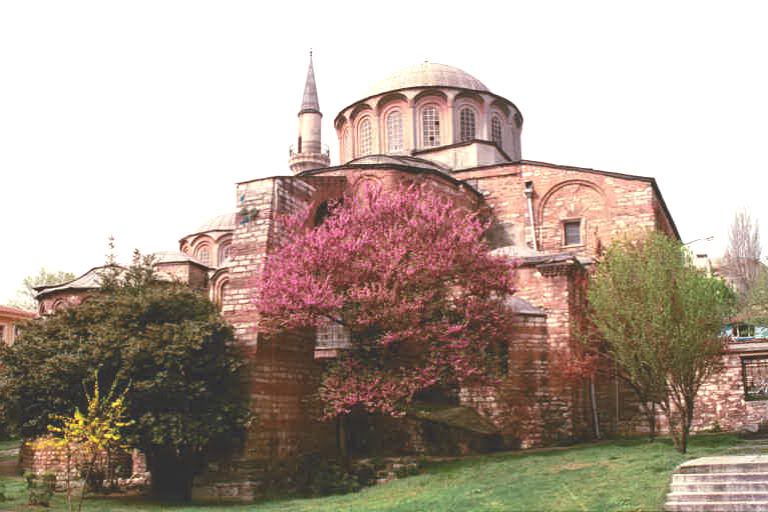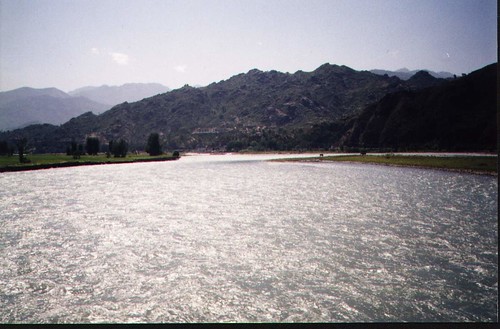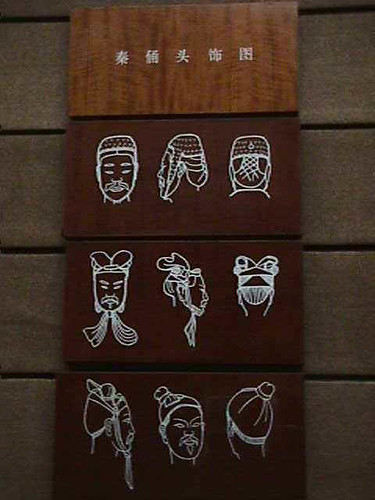Mosaics are designs or pictures created by embedding small pieces of glass, stone, terracotta etc. into a bed of cement or other form of fixative. This form of decoration is often used for panels or on floors, but is especially effective on curved surfaces, such as ceilings and vaults. Mosaics are found both indoors and outdoors.
The art of mosaic, in one form or another, has been practiced for thousands of years, but mosaic as we know it was invented by the Greeks (probably sometime around 4th century BC), who then passed their skills on to the Romans. By 200 BC, specially manufactured pieces ("tesserae") were being used to give extra detail and range of colour to the work. Using small tesserae, sometimes only a few millimetres in size, meant that mosaics could imitate paintings. Many of the mosaics preserved at, for example, Pompeii were the work of Greek artists.
 The Chora Church, home to some of the best preserved Byzantine mosaics in the world.Closeup of some of the mosaics.
The Chora Church, home to some of the best preserved Byzantine mosaics in the world.Closeup of some of the mosaics.
The Romans in due course became the Byzantines, who are renowned for their superb wall and vault mosaics. If you compare mosaics from Roman Britain with Italian ones you will notice that the British examples are simpler in design and less accomplished in technique. Typically Roman subjects were scenes celebrating their gods, domestic themes and geometric designs. The inter-twined rope border effect here is called "guilloche". With the rise of the Byzantine Empire from the 5th century onwards, centred on Byzantium (now Istanbul, Turkey), the art form took on new characteristics.

These included Eastern influences in style and the use of special glass tesserae called smalti, manufactured in northern Italy. These were made from thick sheets of coloured glass. Smalti have a rough surface and contain tiny air bubbles. They are sometimes backed with reflective silver or gold leaf. Whereas Roman mosaics were mostly used as floors, the Byzantines specialised in covering walls and ceilings.
 The ceiling of the Chora Church
The ceiling of the Chora ChurchByzantium fell in the 15th century AD, and mosaic went into a decline until the great revival in the 19th century, a revival which has continued to this day. Modern developments in materials and techniques are evidence that mosaic is very much alive as we approach the Millenium. Computers are of course ideal for designing contemporary mosaics, and are increasingly used for that purpose.
 Another shot of ceiling of the Chora Church
Another shot of ceiling of the Chora ChurchIn the west of Europe, the Moors brought Islamic mosaic and tile art into the Iberian peninsula in the 8th century, while elsewhere in the Muslim world, stone, glass and ceramic were all used in mosaics. The Dome of the Rock in Jerusalem and the Ummayad Great Mosque in Damascus are excellent examples of Islamic Mosaic Art. The Dome of the Rock was built in the late 7th century and is decorated with floral mosaics depicting acanthus leaves, palm trees, cornucopias, vases, and tree-of-life motifs. The tesserae are set against gold backgrounds in dominant shades of green and blue, with accents of red, silver, gray, mauve, black, and white.


Originally, colored glass and stone mosaics covered the outer walls of the Dome of the Rock. Of any building still remaining from the 7th century, this shrine has the largest area of original mosaic.

During the Ottoman period (1517-1918), the outer walls were recovered with brilliant blue, green, yellow and white ceramic tiles in either Arabesque design or with Qur'anic verses. Original tiles can still be seen on the outside of the drum. The rest of the tiles were restored in 1964.

The Ummayad Great Mosque in Damascus (see the above picture and notice the similarities between this one and the 3rd picture from top - interior of chora church) was finished in the early 8th century. It has mosaics on both the exterior and the interior of the building that depict floral and tree motifs as well as buildings and an imaginary city.

In the 13th century the Seljuk Turks of Asia Minor developed a mosaic technique using glazed tiles. These mosaics are dominated by turquoise blue, yellow, green, and white against a cobalt blue background; they are set in geometric patterns with Arabic inscriptions.
Sources:
1. My memory & old HD :), most of the images in particular
2. Harvard Fine Arts Library
3. http://www.thejoyofshards.co.uk/history/index.shtml
4. http://www.sacredsites.com/middle_east/israel/jerusalem.html
5. http://encarta.msn.com/text_761575462___4/Mosaics.html






 T
T

 For whereas the Ancient Greeks meticulously carved individual statues out of stone, the Qin dynasty project held all the problems of production on a mass scale. Tens of thousands of individual human and animal statues were manufactured within a series of processes that began with the molding of solid legs.
For whereas the Ancient Greeks meticulously carved individual statues out of stone, the Qin dynasty project held all the problems of production on a mass scale. Tens of thousands of individual human and animal statues were manufactured within a series of processes that began with the molding of solid legs.



 These included Eastern influences in style and the use of special glass tesserae called smalti, manufactured in northern Italy. These were made from thick sheets of coloured glass. Smalti have a rough surface and contain tiny air bubbles. They are sometimes backed with reflective silver or gold leaf. Whereas Roman mosaics were mostly used as floors, the Byzantines specialised in covering walls and ceilings.
These included Eastern influences in style and the use of special glass tesserae called smalti, manufactured in northern Italy. These were made from thick sheets of coloured glass. Smalti have a rough surface and contain tiny air bubbles. They are sometimes backed with reflective silver or gold leaf. Whereas Roman mosaics were mostly used as floors, the Byzantines specialised in covering walls and ceilings.


 During the Ottoman period (1517-1918), the outer walls were recovered with brilliant blue, green, yellow and white ceramic tiles in either Arabesque design or with Qur'anic verses. Original tiles can still be seen on the outside of the drum. The rest of the tiles were restored in 1964.
During the Ottoman period (1517-1918), the outer walls were recovered with brilliant blue, green, yellow and white ceramic tiles in either Arabesque design or with Qur'anic verses. Original tiles can still be seen on the outside of the drum. The rest of the tiles were restored in 1964.
 In the 13th century the Seljuk Turks of Asia Minor developed a mosaic technique using glazed tiles. These mosaics are dominated by turquoise blue, yellow, green, and white against a cobalt blue background; they are set in geometric patterns with Arabic inscriptions.
In the 13th century the Seljuk Turks of Asia Minor developed a mosaic technique using glazed tiles. These mosaics are dominated by turquoise blue, yellow, green, and white against a cobalt blue background; they are set in geometric patterns with Arabic inscriptions.








